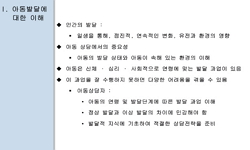This paper explains the principle and system of MMSS-ON, a new story-in-depth of self (SIDS) diagnosis tool developed by applying the narrative theory of literary therapy. MMSS-ON is an online personality diagnosis platform that derives standardized t...
http://chineseinput.net/에서 pinyin(병음)방식으로 중국어를 변환할 수 있습니다.
변환된 중국어를 복사하여 사용하시면 됩니다.
- 中文 을 입력하시려면 zhongwen을 입력하시고 space를누르시면됩니다.
- 北京 을 입력하시려면 beijing을 입력하시고 space를 누르시면 됩니다.

표준화 자기서사 진단도구 MMSS-ON의 원리와 체계 = Principle and System of MMSS-ON, a Standardized Story-in-depth of Self Diagnosis Tool
한글로보기https://www.riss.kr/link?id=A108582374
-
저자
신동흔 (건국대학교)
- 발행기관
- 학술지명
- 권호사항
-
발행연도
2023
-
작성언어
Korean
-
주제어
MMSS ; Story-In-Depth of Self (SIDS) ; Story-In-Depth of Text (SIDT) ; Diagnosis Tool ; Personality Type ; MMLT ; MMSS ; 자기서사 ; 작품서사 ; 심리검사 ; 진단도구 ; 성격유형 ; MMLT
-
등재정보
KCI등재
-
자료형태
학술저널
- 발행기관 URL
-
수록면
141-187(47쪽)
- 제공처
-
0
상세조회 -
0
다운로드
부가정보
다국어 초록 (Multilingual Abstract)
MMSS-ON has 150 questions on 13 tales. Following the concisely arranged folktale passages, each work has 10 to 14 questions asking responses to narrative issues or turning points. All questions are multiple choice type on a 5-point scale. The questions consist of questions to check connectivity with 20 typical folk tale characters and questions to gauge personality and psychological characteristics. The narrative response results are automatically scored and converted into a standardized index.
Diagnosis of MMSS-ON includes three categories: [character], [personality], and [mentality]. In the [Character] category, ‘my character seen in the light of folktale characters’ is revealed. At the level of each work, the homogeneity and heterogeneity of the characters in the work and the test participants are diagnosed. What [Personality] derives is 'my personality type seen as a narrative'. Using ±independence, ±action, ±reality, and ±tolerance as indicators, which of the 16 personality types the participant falls under, and what characteristic profile he has is revealed. What is derived from [Psychology] is 'my psychological characteristics in the light of the narrative'. Four items are diagnosed: depression/lethargy, anger/aggression, anxiety/avoidance, and conspicuousness. Test participants can immediately obtain detailed explanations of [character] and [personality] diagnosis results online. The results of the [mentality] will be serviced later after sufficient data analysis.
In MMSS-ON, the test process itself has significance as a literary therapeutic activity. This is because it is a process of carrying out a close narrative dialogue with literary works. The explanation provided as a result of the diagnosis greatly helps people to understand their story-in-depth of self. When they participate in literary therapy counseling, it is used as a useful reference for designing and proceeding with therapeutic counseling. If MMSS-ON is disseminated and widely used, it will contribute to the popular activation of literature therapy and the expansion of its social role.
This paper explains the principle and system of MMSS-ON, a new story-in-depth of self (SIDS) diagnosis tool developed by applying the narrative theory of literary therapy. MMSS-ON is an online personality diagnosis platform that derives standardized test results by converging narrative responses to folktales into objective indicators. By objectively and clearly controlling the narrative response to folktales, standard diagnosis results were derived. The diagnosis sheet and analysis index setting, diagnosis result commentary were completed, and an online test site was established.
MMSS-ON has 150 questions on 13 tales. Following the concisely arranged folktale passages, each work has 10 to 14 questions asking responses to narrative issues or turning points. All questions are multiple choice type on a 5-point scale. The questions consist of questions to check connectivity with 20 typical folk tale characters and questions to gauge personality and psychological characteristics. The narrative response results are automatically scored and converted into a standardized index.
Diagnosis of MMSS-ON includes three categories: [character], [personality], and [mentality]. In the [Character] category, ‘my character seen in the light of folktale characters’ is revealed. At the level of each work, the homogeneity and heterogeneity of the characters in the work and the test participants are diagnosed. What [Personality] derives is 'my personality type seen as a narrative'. Using ±independence, ±action, ±reality, and ±tolerance as indicators, which of the 16 personality types the participant falls under, and what characteristic profile he has is revealed. What is derived from [Psychology] is 'my psychological characteristics in the light of the narrative'. Four items are diagnosed: depression/lethargy, anger/aggression, anxiety/avoidance, and conspicuousness. Test participants can immediately obtain detailed explanations of [character] and [personality] diagnosis results online. The results of the [mentality] will be serviced later after sufficient data analysis.
In MMSS-ON, the test process itself has significance as a literary therapeutic activity. This is because it is a process of carrying out a close narrative dialogue with literary works. The explanation provided as a result of the diagnosis greatly helps people to understand their story-in-depth of self. When they participate in literary therapy counseling, it is used as a useful reference for designing and proceeding with therapeutic counseling. If MMSS-ON is disseminated and widely used, it will contribute to the popular activation of literature therapy and the expansion of its social role.
국문 초록 (Abstract)
MMSS-ON은 13개 설화에 걸친 150개의 문항을 갖추고 있다. 간명하게 정리한 구술체 이야기 지문에 이어 이야기별로 서사적 쟁점 내지 분기점에 대한 반응을 묻는 10~14개의 문항이 제시된다. 모든 문항은 5점척도의 객관식 선택형으로 되어 있다. 문항은 ‘주먹이’에서 ‘무수옹’에 이르는 20명의 전형적인 설화 캐릭터와의 연결성을 점검하는 질문들과 성격적, 심리적 특성을 가늠하는 질문들로 구성돼 있다. 서사반응 결과는 자동으로 점수 집계가 이루어지고 표준화 지수로 환산된다.
MMSS-ON의 표준화 자기서사 진단은 크게 세 범주를 포함한다. [인물], [성향], [심리]가 그것이다. [인물]이 짚어내는 것은 ‘설화 인물로 보는 나의 캐릭터’이다. 각 작품 차원에서 작중인물과 검사 참여자의 캐릭터적 동질성과 이질성 여부 및 그 정도를 진단하게 된다. [성향]이 도출하는 것은 ‘서사로 보는 나의 성격유형’이다. ±독립성, ±행동성, ±현실성, ±포용성 등을 지표로 삼아 16가지 성격유형 중 검사 참여자가 어디에 속하며, 어떤 특징적인 프로파일을 지니는지를 드러내게 된다. [심리]에서 짚어내는 것은 ‘서사로 보는 나의 심리 특성’이다. 우울과 무기력, 분노와 공격성, 불안과 회피, 인정욕구와 과시성 등 네 항목에 대한 진단을 행하게 된다. 검사 참여자는 온라인상에서 즉각적으로 ‘설화 인물로 보는 나의 캐릭터’와 ‘서사로 보는 나의 성격유형’에 대한 상세하고 친절한 해설을 받아볼 수 있다. [심리] 영역의 진단결과는 충분한 데이터 확보와 분석을 거쳐 추후에 서비스를 추가할 예정이다.
MMSS-ON은 검사 과정 자체가 문학치료적 행위로서 의의를 지닌다. 작품서사와의 긴밀한 서사적 대화를 이루는 과정이기 때문이다. 진단결과로 제공되는 해설은 사람들이 스스로 자기서사를 이해하는 데 큰 도움을 주며, 이들이 문학치료 상담에 참여할 경우 상담의 설계와 진행을 위한 요긴한 참고자료로 활용된다. MMSS-ON이 안착돼서 널리 활용되면 문학치료의 대중적 활성화와 사회적 역할 확대에 기여할 것이다.
이 논문은 문학치료학 서사이론을 적용해서 개발한 새로운 자기서사 진단도구 MMSS-ON의 성격과 구성을 설명하고 원리와 체계를 논의한 연구다. MMSS-ON은 작품서사에 대한 투사 반응을 통한 문...
이 논문은 문학치료학 서사이론을 적용해서 개발한 새로운 자기서사 진단도구 MMSS-ON의 성격과 구성을 설명하고 원리와 체계를 논의한 연구다. MMSS-ON은 작품서사에 대한 투사 반응을 통한 문학적 검사라는 MMSS의 정체성을 유지하면서도, 설화에 대한 서사반응을 객관적 수치로 치환함으로써 표준화된 검사 결과가 산출되도록 한 온라인판 검사 플랫폼이다. 설화 작품서사에 대한 서사반응을 더 객관적이고 명료한 형태로 통제함으로써 표준적 결과가 도출되도록 했다. 검사지와 분석지표 설정, 진단결과 해설 작업이 두루 완성되었으며, 시험적 점검을 거쳐 온라인 검사 사이트를 구축을 완료했다.
MMSS-ON은 13개 설화에 걸친 150개의 문항을 갖추고 있다. 간명하게 정리한 구술체 이야기 지문에 이어 이야기별로 서사적 쟁점 내지 분기점에 대한 반응을 묻는 10~14개의 문항이 제시된다. 모든 문항은 5점척도의 객관식 선택형으로 되어 있다. 문항은 ‘주먹이’에서 ‘무수옹’에 이르는 20명의 전형적인 설화 캐릭터와의 연결성을 점검하는 질문들과 성격적, 심리적 특성을 가늠하는 질문들로 구성돼 있다. 서사반응 결과는 자동으로 점수 집계가 이루어지고 표준화 지수로 환산된다.
MMSS-ON의 표준화 자기서사 진단은 크게 세 범주를 포함한다. [인물], [성향], [심리]가 그것이다. [인물]이 짚어내는 것은 ‘설화 인물로 보는 나의 캐릭터’이다. 각 작품 차원에서 작중인물과 검사 참여자의 캐릭터적 동질성과 이질성 여부 및 그 정도를 진단하게 된다. [성향]이 도출하는 것은 ‘서사로 보는 나의 성격유형’이다. ±독립성, ±행동성, ±현실성, ±포용성 등을 지표로 삼아 16가지 성격유형 중 검사 참여자가 어디에 속하며, 어떤 특징적인 프로파일을 지니는지를 드러내게 된다. [심리]에서 짚어내는 것은 ‘서사로 보는 나의 심리 특성’이다. 우울과 무기력, 분노와 공격성, 불안과 회피, 인정욕구와 과시성 등 네 항목에 대한 진단을 행하게 된다. 검사 참여자는 온라인상에서 즉각적으로 ‘설화 인물로 보는 나의 캐릭터’와 ‘서사로 보는 나의 성격유형’에 대한 상세하고 친절한 해설을 받아볼 수 있다. [심리] 영역의 진단결과는 충분한 데이터 확보와 분석을 거쳐 추후에 서비스를 추가할 예정이다.
MMSS-ON은 검사 과정 자체가 문학치료적 행위로서 의의를 지닌다. 작품서사와의 긴밀한 서사적 대화를 이루는 과정이기 때문이다. 진단결과로 제공되는 해설은 사람들이 스스로 자기서사를 이해하는 데 큰 도움을 주며, 이들이 문학치료 상담에 참여할 경우 상담의 설계와 진행을 위한 요긴한 참고자료로 활용된다. MMSS-ON이 안착돼서 널리 활용되면 문학치료의 대중적 활성화와 사회적 역할 확대에 기여할 것이다.
참고문헌 (Reference)
1 정운채, "자기서사진단도구 개발을 위한 기초서사척도" 한국고전문학교육학회 (14) : 213-242, 2007
2 정운채, "자기서사진단검사도구의 개발에 따른 고전문학 연구와 교육의 새 지평" 한국문학치료학회 16 : 201-225, 2010
3 황혜진, "자기서사 진단도구의 개발 현황과 개선 방안" 한국문학치료학회 38 : 65-98, 2016
4 장경희, "설화를 활용한 문학치료적 웰다잉 교육 프로그램 실행연구" 건국대학교 2021
5 김은정, "설화를 통한 농아인 대상 문학치료 연구 : MMSS 서사반응 분석과미술치료 활동을 연계한 문학치료 사례를 중심으로" 건국대학교 2021
6 김은정, "민담 <두 나그네>를 활용한 문학치료학적 상담사례연구 -MMSS검사 분석과 ‘그림자’원형 이론을 배경으로-" 한국문학치료학회 54 : 217-250, 2020
7 정운채, "문학치료학의 서사이론" 한국문학치료학회 9 : 247-278, 2008
8 신동흔, "문학치료를 위한 자기서사 진단과 해석 연구 -MMSS 진단지의 성격과 구성, 해석과 활용-" 한국문학치료학회 54 : 9-104, 2020
9 신동흔, "문학치료를 위한 설화의 서사적 분기점과 서사 반응 분석 -<선녀와 나무꾼> MMLT를 중심으로-" 한국문학치료학회 61 : 9-128, 2021
10 신동흔, "문학치료를 위한 서사 분석 요소와 체계 연구" 한국문학치료학회 49 : 9-89, 2018
1 정운채, "자기서사진단도구 개발을 위한 기초서사척도" 한국고전문학교육학회 (14) : 213-242, 2007
2 정운채, "자기서사진단검사도구의 개발에 따른 고전문학 연구와 교육의 새 지평" 한국문학치료학회 16 : 201-225, 2010
3 황혜진, "자기서사 진단도구의 개발 현황과 개선 방안" 한국문학치료학회 38 : 65-98, 2016
4 장경희, "설화를 활용한 문학치료적 웰다잉 교육 프로그램 실행연구" 건국대학교 2021
5 김은정, "설화를 통한 농아인 대상 문학치료 연구 : MMSS 서사반응 분석과미술치료 활동을 연계한 문학치료 사례를 중심으로" 건국대학교 2021
6 김은정, "민담 <두 나그네>를 활용한 문학치료학적 상담사례연구 -MMSS검사 분석과 ‘그림자’원형 이론을 배경으로-" 한국문학치료학회 54 : 217-250, 2020
7 정운채, "문학치료학의 서사이론" 한국문학치료학회 9 : 247-278, 2008
8 신동흔, "문학치료를 위한 자기서사 진단과 해석 연구 -MMSS 진단지의 성격과 구성, 해석과 활용-" 한국문학치료학회 54 : 9-104, 2020
9 신동흔, "문학치료를 위한 설화의 서사적 분기점과 서사 반응 분석 -<선녀와 나무꾼> MMLT를 중심으로-" 한국문학치료학회 61 : 9-128, 2021
10 신동흔, "문학치료를 위한 서사 분석 요소와 체계 연구" 한국문학치료학회 49 : 9-89, 2018
11 최정문, "무기력을 호소하는 20대 후반 여성에 대한 문학치료 사례연구 : ' 어른아이' 서사의 변화과정을 중심으로" 건국대학교 2021
12 "http://mmss-on.kr/MMSS-ON/form.php"
13 "http://mmlt.kr"
14 신동흔, "MMSS 자기서사 진단지 활용 매뉴얼" 현출판 2022
15 신동흔, "MMLT_선녀와 나무꾼 활용 매뉴얼" 현출판 2022
16 최정문, "<들장미 공주> MMLT 서사 반응 분석" 한국문학치료학회 65 : 39-92, 2022
동일학술지(권/호) 다른 논문
-
능동적 정동 생산을 위한 치유 콘텐츠의 개선에 관한 실행 연구- 연극 <과수원의 세레나데>를 중심으로
- 한국문학치료학회
- 이대성
- 2023
- KCI등재
-
오정희 <바람의 넋>을 통해 보는 부부갈등과 ‘상처받은 내면아이’의 투사 문제 -문학치료학과 대상관계 이론을 중심으로-
- 한국문학치료학회
- 박지혜
- 2023
- KCI등재
-
코로나 시기 ‘공군 부곰카페’를 대상으로 살펴본 문학치료의 양상과 전망
- 한국문학치료학회
- 박경주
- 2023
- KCI등재
-
- 한국문학치료학회
- 신로운
- 2023
- KCI등재




 KISS
KISS






